Introduction
Have you ever noticed your dog scooting across the floor? This behavior often indicates anal gland issues. Understanding your dog’s anal glands is essential. These glands play a crucial role in your dog’s health and communication. When they malfunction, it can lead to discomfort and serious health problems. Being aware of these glands can help you ensure your furry friend stays happy and healthy.
Speaking of keeping your dog happy, a PetSafe Healthy Pet Gravity Feeder can ensure your pup gets their meals on time, without you having to worry about them getting hangry!

Summary and Overview
Anal glands, or anal sacs, produce a smelly fluid used for marking territory. They are located on either side of your dog’s anus. Common problems include impaction and infections. These issues can cause pain and distress for your pet. Recognizing early symptoms is vital for effective treatment. Prevention is also key—maintaining a proper diet and lifestyle can support anal gland health.
Speaking of proper diet, consider feeding your dog Blue Buffalo Life Protection Formula Dog Food. It’s packed with wholesome ingredients that help maintain your dog’s overall health, including those pesky anal glands!

What Are Dog Anal Glands?
Anal glands are small pouches situated near the anus. Each gland resembles a pea and contains a pungent fluid. This fluid serves as a form of communication among dogs, helping them mark their territory. When dogs defecate, the pressure from the stool helps to express the fluid. This unique scent provides information about the dog’s identity, including their health and mood.
Approximately 10% of dogs experience anal gland issues at some point in their lives. Factors like obesity, dietary habits, and stool consistency can affect these glands. The fluid produced is a combination of various secretions, including skin cells and bacteria. Keeping an eye on your dog’s behavior can help you identify signs of discomfort early.
To help maintain your dog’s dental health, which is just as important as those anal glands, you might want to check out Vet’s Best Dog Toothpaste. Regular brushing can help prevent bacteria build-up and keep your dog’s mouth fresh and clean!
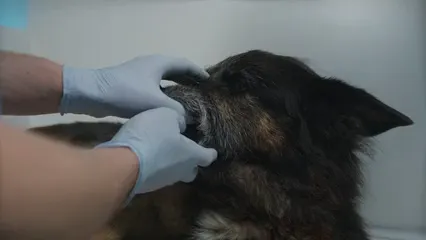
Common Problems Associated with Dog Anal Glands
Types of Anal Gland Issues
Dog anal glands can experience several issues, leading to discomfort and health problems. One common issue is anal gland impaction. This occurs when the glands fill with fluid but fail to empty. As a result, dogs may experience pain and irritation.
Another serious condition is anal gland infection. Bacteria can multiply in the impacted glands, causing inflammation and discomfort. Symptoms may include swelling and discharge. If left untreated, an infection can lead to abscess formation, which is painful and may require surgical intervention.
If you’re worried about your dog’s ear health, consider Zymox Enzymatic Dog Ear Cleaner. It’s a fantastic solution for keeping your pup’s ears clean and infection-free, which can also help with overall health!
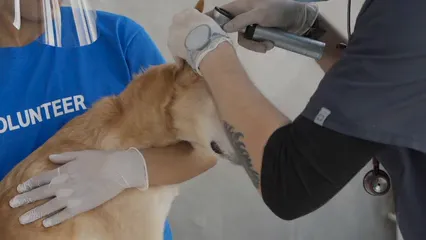
In rare cases, anal gland cancer can develop. This condition primarily affects older dogs and may show signs like swelling or unusual discharge. Statistics reveal that approximately 4% of dogs face anal gland problems annually, with small breeds being more susceptible.
If your dog shows persistent symptoms, consult a veterinarian for proper diagnosis and treatment.
Symptoms of Anal Gland Problems
Recognizing the symptoms of anal gland issues is crucial for your dog’s well-being. One common sign is scooting, where dogs drag their rear across the ground to relieve irritation. Excessive licking of the anal area is another indicator of discomfort.
You might also notice a foul odor emanating from your dog’s rear. This unpleasant smell is often a sign of infection or impaction. Pain during defecation can manifest as straining or reluctance to poop, which may lead to changes in appetite or behavior.
Data shows that around 70% of pet owners notice these symptoms in their dogs. If you observe any of these signs, monitor your dog closely. Early intervention can prevent more serious health issues down the line.

Causes of Anal Gland Problems
Anal gland issues in dogs can stem from various factors. One primary cause is dietary habits. A diet low in fiber can lead to soft stools, making it difficult for anal glands to empty properly. When stools are firm, they help express the glands naturally during defecation.
Obesity also plays a significant role. Overweight dogs are more prone to anal gland problems. Excess body weight can put pressure on these glands, hindering their ability to function effectively. Keeping your dog at a healthy weight is crucial for overall well-being.
To assist in maintaining your dog’s weight, consider investing in a PetFusion Ultimate Dog Bed. A comfy bed encourages restful sleep and can help your dog maintain an ideal weight!

Allergies can contribute to anal gland issues as well. Dogs with food or environmental allergies often experience inflammation, affecting the glands. This inflammation can lead to blockages and infections.
Lastly, anatomical predispositions can play a part. Certain breeds, especially smaller ones, may have narrower anal gland openings. This anatomical feature can increase the likelihood of impaction or infection. Research indicates that a high-fiber diet can reduce the risk of anal gland problems significantly, making it essential to assess your dog’s diet with your veterinarian.
Diagnosis and Treatment
How are anal gland issues diagnosed? Veterinarians typically start with a thorough physical examination. This includes checking for any signs of swelling, redness, or discharge around the anal area. If necessary, additional diagnostics like imaging or culture tests might be performed to assess the situation further.
Regular vet consultations are essential for maintaining your dog’s health. Studies show that around 15% of dogs require anal gland evaluations each year. This emphasizes the importance of routine check-ups. During these visits, your vet can examine your dog’s anal glands and offer advice on any necessary treatments.
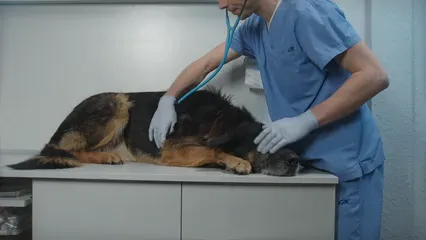
Meanwhile, you can keep your dog entertained and distracted with a fun toy like the Outward Hound Hide-A-Squirrel Puzzle Toy. It keeps their mind sharp while providing entertainment during those vet visits!
Timely diagnosis is critical. If you notice symptoms like scooting or excessive licking, don’t hesitate to consult your veterinarian. Early intervention can prevent more serious complications and ensure your furry friend remains comfortable and healthy.
Treatment Options for Anal Gland Issues
Dealing with anal gland problems can be frustrating for both you and your dog. Fortunately, several treatment options are available to help alleviate these issues.
One common method is the manual expression of anal glands. Veterinarians can perform this procedure, releasing built-up fluid that causes discomfort. Many dogs respond well to this treatment, often feeling immediate relief afterward.
If an infection is present, antibiotic treatment may be necessary. Typically, oral antibiotics are prescribed, and they have a high success rate in resolving infections effectively. In more severe cases, such as recurrent infections or abscesses, surgical options might be considered. Surgical removal of the anal glands is a last resort, but it can be necessary for dogs with chronic problems.
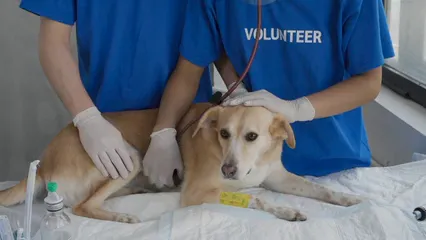
Home remedies such as dietary changes can also be effective. Increasing your dog’s fiber intake helps produce firmer stools, which naturally express the glands during defecation. A diet rich in fiber can reduce the frequency of anal gland issues, making it a practical preventive measure.
Statistics show that manual expression has a success rate of over 90% for immediate relief. However, it’s crucial to follow your veterinarian’s advice for effective treatment and to prevent future issues. Regular check-ups can help monitor your dog’s anal gland health.
Prevention of Anal Gland Problems
Preventing anal gland issues is much easier than treating them. Start with dietary adjustments. A healthy diet high in fiber promotes firm stools, which can help empty anal glands naturally. Foods like pumpkin, carrots, and certain supplements can make a significant difference.
To help with dietary adjustments, check out the Merrick Grain-Free Texas Beef & Sweet Potato Recipe. It’s a delicious option that your dog will love while also being healthy!
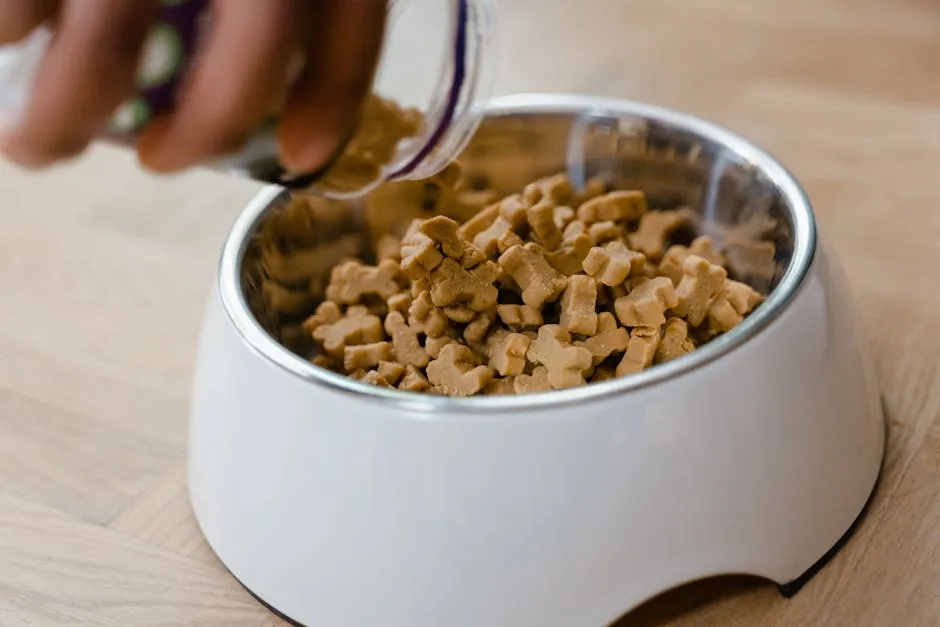
Regular exercise is vital too. Keeping your dog active helps maintain a healthy weight and promotes good digestion, both of which are essential for anal gland health. Weight management is crucial, as overweight dogs are more likely to experience anal gland problems.
Routine veterinary care plays a key role in prevention. Regular check-ups allow your vet to monitor your dog’s anal glands and address any issues before they escalate. Data indicates that dogs on a high-fiber diet experience a 30% lower risk of anal gland problems.
By implementing these prevention strategies, you can significantly reduce the likelihood of anal gland issues. Encourage your dog to enjoy a balanced diet and stay active. A proactive approach is always better than waiting for problems to arise.

Conclusion
Understanding your dog’s anal glands is crucial for their health. These glands play a significant role in communication and can cause discomfort when issues arise. Proactive monitoring is essential. If you notice symptoms like scooting or excessive licking, consult your veterinarian. Regular check-ups can ensure any potential problems are caught early.
A healthy diet is vital too. Providing your dog with nutritious food can prevent many anal gland issues. For a tasty treat, consider Greenies Original Dental Treats for Dogs. They help with dental hygiene while making your pup feel special!

FAQs
What are the signs of anal gland problems in dogs?
Symptoms include scooting, excessive licking, and a foul odor. If your dog seems uncomfortable or avoids sitting, these may be indicators of anal gland issues.
Can I express my dog’s anal glands at home?
While it’s possible to express anal glands at home, it’s risky. Improper techniques can cause injury or infection. Always consult your veterinarian for guidance.
How often should a dog’s anal glands be expressed?
Typically, dogs may need their anal glands expressed every 3 to 4 weeks, depending on their size and health status. Regular checks can help avoid complications.
What dietary changes can help with anal gland health?
High-fiber foods can improve stool consistency. Consider adding pumpkin or fiber supplements to your dog’s diet to help keep their anal glands functioning properly.
Are anal glands necessary for my dog?
Anal glands help with communication and marking territory. While they are not essential for health, surgical removal can be done if problems persist. Always consult your vet before making such decisions.
Understanding the importance of dog anal glands can help prevent health issues. dog anal glands are crucial for your dog’s well-being.
For added peace of mind, consider a PetSafe Wireless Pet Containment System. It helps keep your dog safe in your yard while you focus on their health and happiness!
Please let us know what you think about our content by leaving a comment down below!
Thank you for reading till here 🙂
All images from Pexels





